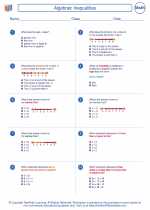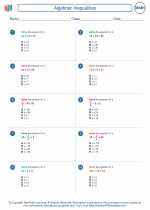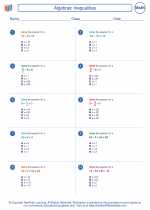Histogram
A histogram is a graphical representation of the distribution of numerical data. It consists of a series of vertical bars, where each bar represents a range of values, and the height of the bar corresponds to the frequency of values within that range.
Key Concepts
- Frequency: The number of data points that fall within a specific range or bin.
- Bins: The intervals into which the data is grouped for display on the histogram.
- X-axis: Represents the range of values or bins.
- Y-axis: Represents the frequency of values within each bin.
Creating a Histogram
To create a histogram, follow these steps:
- Determine the range of the data and decide on the number of bins.
- Create the intervals (bins) to group the data.
- Tally the frequency of data points within each bin.
- Draw the X-axis and Y-axis, labeling the bins and frequencies.
- Draw a bar for each bin, with the height of the bar corresponding to the frequency of values in that bin.
Example
Suppose we have the following data representing the scores of a class:
| Score Range | Frequency |
|---|---|
| 70-79 | 5 |
| 80-89 | 8 |
| 90-99 | 3 |
Study Guide
Key points to remember about histograms:
- Understand the concept of frequency and how it is represented in a histogram.
- Know how to create intervals (bins) and tally the frequencies for each bin.
- Be able to interpret a histogram and draw conclusions about the data distribution.
◂Math Worksheets and Study Guides Seventh Grade. Algebraic Inequalities
Study Guide Algebraic Inequalities
Algebraic Inequalities  Worksheet/Answer key
Worksheet/Answer key Algebraic Inequalities
Algebraic Inequalities  Worksheet/Answer key
Worksheet/Answer key Algebraic Inequalities
Algebraic Inequalities  Worksheet/Answer key
Worksheet/Answer key Algebraic Inequalities
Algebraic Inequalities 

 Worksheet/Answer key
Worksheet/Answer key
 Worksheet/Answer key
Worksheet/Answer key
 Worksheet/Answer key
Worksheet/Answer key

The resources above cover the following skills:
Algebra (NCTM)
Represent and analyze mathematical situations and structures using algebraic symbols.
Use symbolic algebra to represent situations and to solve problems, especially those that involve linear relationships.